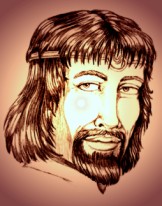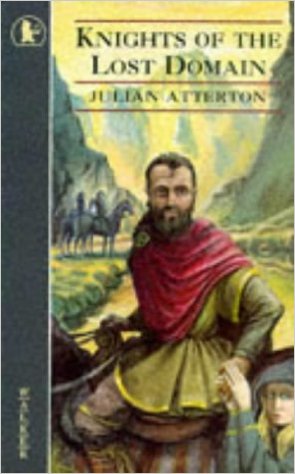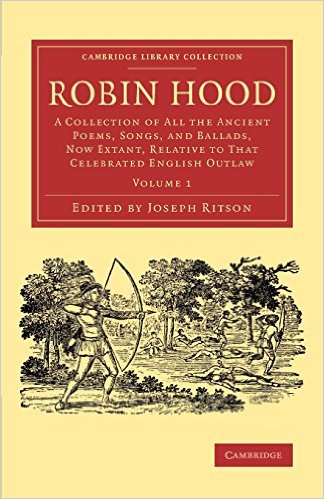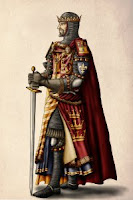Welcome to Artsrainbow. This is your first post. Edit or delete it, then start writing!
Author Archives: trevor

Forward to the Bards and Authors of North Yorkshire
 |
| George Markham Tweddell 1823 – 1903 |
The Bards And Authors of North Yorkshire – From 500 AD to 1960 is a new blog in progress. There is a lot to add yet.
The object of this site is to showcase the historical extent of literary activity in the North East between Hartlepool and Whitby. The boundaries and name changes have been many but it encompasses what is now the Tees Valley and North Yorkshire. The area has often been marginalised by literary commentators and not many know the extent or nature of it.
The Birth of English Literature
William Hall Burnett – Poet and editor of Middlesbrough Daily Exchange suggested in his book Old Cleveland – Local Writers and Local Worthies 1886 that “Hereabouts, we may fairly say, that English literature had it’s first beginnings”. He was refering to the likes of Aneurin, the Celtic bard composing his verses about the Battle of Cattreath (Catterick) on our borders, the assertion that Beowulf was buried on Boulby Cliff (Bowleby – Beowulf’s By) and the ‘Hart’ emblem on Hartlepool’s Coat of Arms, and Caedmon, Whitby. George Markham Tweddell, William Hall Burnett and the Rev Gideon Smales, writing in the 19thC, are the main sources of this huge history of Bards and Authors in our area and more research is needed. It is hoped, therefore that this site will prove interesting to the reader but also provide a starting point and material for further research into the writers and the literary history of the area in general.
Tees On Line 2005
Along the way I discovered stories of a thriving Printing and Publishing culture in 19thC Stokesley; tales of Lawrence Sterne and John Hall Stevenson at Crazy Castle (Skelton Castle) in the 1700’s; visitations of the Romantic poets – William Wordsworth, Coleridge, Byron and Shelley in Stockton, Hartlepool and Thomas Hogg‘s mansion in Norton Tees. Evidence of John Gower (Gower the Moral), poet and mentor to Chaucer, living at Sexhow near Stokseley and lots more.This site covers up to 1960 and the associated Outlet site (named after the poetry magazine we ran in 1980’s) covers the modern period.
The main sources of information are by
- George Markham Tweddell The Bards and Authors of Cleveland and South Durham 1872;
- Willian Hall Burnett’s old Cleveland – Local Writers and Local Worthies 1886. Other sources include
- Whitby Authors 1867 by Rev. Gideon Smales and for later writers
- Andy Croft’s The Fire and the Horror essay 1989.
Tweddell had planned another 3 volumes of his book which never materialised but left a list of many names he intended to write about. We will try and incude these names with a profile of the wrtier and their works.
Many of those writers were covered in his various publications, The Yorkshire Miscellany, The North Yorkshire Tractates, his newspaper The Cleveland News and Stokesely Reporter and a talk he gave to the Stokesley Mechanics Institute 1850. John Brewster’s Parochial History of Stockton on Tees 1829 and a later revised edtion has a Stockton literary section, as doews Henry Heavisides – The Annals of Stockton

Julian Atterton 1956 – 2005
 |
| Julian Atterton |
“Julian Atterton was one of the local children’s writers who set his novels in pre-industrial Cleveland.” Andy Croft The Fire and the Horror 1989
His father, Robert, was a headteacher at Grangetown, near Middlesbrough, and died when Julian was 11, and his mother took the family to the South of England, sending Julian to a boarding school in Surrey, where he pined for the moors.
He recently recorded a CD, Love and Run, with Selliez-Vandernotte in collaboration with Paul Whittaker and Charles O’Connor of Irish folk/rock band Horslips.
He met his first wife, Madeleine Gair, at the University of East Anglia, and after graduating returned with her to Yorkshire, living for a time in York where he wrote his first book, The Last Harper. They moved to Castleton, on the North York Moors, into a house which had been given to his mother, and in an attic room with a view of the moors Julian wrote his books, essays and song lyrics
In 1987 he started story- telling to children in libraries and schools across the North of England. A natural entertainer with a talent for mimicry and making people laugh, Julian won the children’s attention with his mischievous sense of fun.
He mesmerised them with his imagination and inspired them to make up their own stories, which the schools would often compile into books. He took local teenagers out climbing crags in the Lake District and Scotland. He climbed regularly, the last time being the weekend before he was taken suddenly and fatally ill.
He enjoyed photography, and he kept a journal of his climbs and walks, some of which are published in the climbers’ journal, Loose Scree. His friends all knew him as a well-read, knowledgeable, witty, and charismatic man, capable of outrageous honesty while at the same time very sensitive to other people’s feelings.
After his first marriage ended, he met and married Jane Robinson, a dancer and theatre designer. Last summer they collaborated with musician Bob Pegg in Strathpeffer, Scotland, where they worked with children during the school holiday, devising an outdoor promenade play with music, costumes and puppets.
At the time of his death he was working on the second draft of an adult novel, The Art of Rapture, and a biography of the climber Percy Farrow.”
The lyrics of one of his songs included these poignant words:
“Step with open heart
into a new beginning
Let your love flow clear and strong
Reaching open arms
We’re gonna greet the morning
Lovers in a land beyond.”
Source – http://www.yorkshirepost.co.uk/news/community/julian-atterton-author-lyricist-singer-and-climber-1-2555151#ixzz3psO15N17

Robin Hood connections in North Yorkshire
ROBIN HOOD – As with King Arthur, the existence and legends of Robin Hood are widely discussed.
There are claims both in Nottingham and Yorkshire – Doncaster etc. But what of North Yorkshire…?
The Noble Fisherman, or, Robin Hood’s Preferment
(Child Ballad No. 148) by: Anonymous (Author), Francis James Child (Editor)from: The English and Scottish Popular Ballads 1882-1889 Source
http://d.lib.rochester.edu/robin-hood/text/child-ballad-148-the-noble-fisherman-or-robins-preferment
In summer time, when leaves grow green,
When they doe grow both green and long,
Of a bould outlaw, calld Robin Hood,
It is of him I sing this song.
When the lilly leafe and the elephant
Doth bud and spring with a merry good cheere,
This outlaw was weary of the wood-side,
And chasing of the fallow deere.
‘The fishermen brave more mony have
Then any merchant, two or three;
Therefore I will to Scarborough goe,
That I a fisherman brave may be.’
This outlaw calld his merry men all,
As they sate under the green-wood tree:
‘If any of you have gold to spend,
I pray you heartily spend it with me.
‘Now,’ quoth Robin, ‘I ‘le to Scarborough goe,
It seemes to be a very faire day;’
Who tooke up his inne at a widdow-womans house,
Hard by upon the water gray.
Who asked of him, Where wert thou borne?
Or tell to me, where dost thou fare?
‘I am a poore fisherman,’ saith he then,
‘This day intrapped all in care.’
‘What is thy name, thou fine fellow?
I pray thee heartily tell to me;’
‘In mine own country where I was borne,
Men called me Simon over the Lee.’
‘Simon, Simon,’ said the good wife,
‘I wish thou maist well brooke thy name;’
The outlaw was ware of her courtesie,
And rejoycd he had got such a dame.
‘Simon, wilt thou be my man?
And good round wages I ‘le give thee;
I have as good a ship of mine owne
As any sayle upon the sea.
‘Anchors and planks thou shalt want none,
Masts and ropes that are so long;’
‘And if that you thus furnish me,’
Said Simon, ‘nothing shall goe wrong.’
They pluckt up anchor, and did away did sayle,
More of a day then two or three;
When others cast in their baited hooks,
The bare lines into the sea cast he.
‘It will be long,’ said the master then,
‘Ere this great lubber do thrive on the sea;
I ‘le assure you he shall have no part of our fish,
For in truth he is of no part worthy.’
‘O woe is me,’ said Simon then,
‘This day that ever I came here!
I wish I were in Plomton Parke,
In chasing of the fallow deere.
‘For every clowne laughs me to scorne,
And they by me set nought at all;
If I had them in Plomton Park,
I would set as little by them all.’
They pluckt up anchor, and away did sayle,
More of a day then two or three;
But Simon spied a ship of warre,
That sayld towards them most valourously.
‘O woe is me,’ said the master then,
‘This day that ever I was borne!
For all our fish we have got to-day
Is every bit lost and forlorne.
‘For your French robbers on the sea,
They will not spare of us one man,
But carry us to the coast of France,
And ligge us in the prison strong.’
But Simon said, Doe not feare them,
Neither, master, take you no care;
Give me my bent bow in my hand,
And never a Frenchman will I spare.
‘Hold thy peace, thou long lubber,
For thou art nought but braggs and boast;
If I should cast the over-board,
There were nothing but a lubber lost.’
Simon grew angry at these words,
And so angry then was he
That he took his bent bow in his hand,
And to the ship-hatch goe doth he.
‘Master, tye me to the mast,’ saith he,
‘That at my mark I may stand fair,
And give me my bended bow in my hand,
And never a Frenchman will I spare.’
He drew his arrow to the very head,
And drew it with all might and maine,
And straightway, in the twingling of an eye,
Doth the Frenchmans heart the arow gain.
The Frenchman fell downe on the ship-hatch,
And under the hatches down below;
Another Frenchman that him espy’d
The dead corps into the sea doth throw.
‘O master, loose me from the mast,’ he said,
‘And for them all take you no care,
And give me my bent bow in my hand,
And never a Frenchman will I spare.’
Then streight [they] did board the Frenchmans ship,
They lying all dead in their sight;
They found within the ship of warre
Twelve thousand pound of money bright.
‘The one halfe of the ship,’ said Simon then,
‘I ‘le give to my dame and children small;
The other halfe of the shlp I ‘le bestow
On you that are my fellowes all.’
But now bespake the master then,
For so, Simon, it shall not be;
For you have won her with your own hand,
And the owner of it you shall bee.
‘It shall be so, as I have said;
And, with this gold, for the opprest
An habitation I will build,
Where they shall live in peace and rest.’
Joseph Ritson born in Stockton on Tees (1752- 1803 (Lawyer, Writer and Antiquarian). His collection
of the Robin Hood ballads is perhaps his greatest single achievement, called Robin Hood: A Collection of All the Ancient Poems, Songs, and Ballads, Now Extant, Relative to That Celebrated English Outlaw: To Which Are Prefixed Historical Anecdotes of His Life. In Two Volumes.
More on Joseph Ritson in a separate post on this site.
(Read online or download Joseph Ritson’s Robin Hood as a free ebook – here).
More recently, Julian Atterton, (Storyteller, Author, Lyricist, Singer and Climber) and brought up in Saltburn, lived in Castleton on the N. York moors when he wrote and researched The Outlaw Robin Hood, published by Walker Books in 1987.
 |
| Julian Atterton |
His writing output has been quite diverse, and we will include a post about him on this site. Meanwhile, in relation to Robin Hood associations in the area, Peter has a handle on that. In his book Folk Tales from the North York Moors he identifies a number of associations and in fact talks about them in this article for the Gazette and Herald, here
Peter Walker says
“As a child in Glaisdale in the North York Moors, one of my regular playgrounds was our local greenwood, ie Arncliffe Wood, where I would go to search for Robin Hood’s Cave. I never found it even though local folklore said it was definitely somewhere in that wood along with an underground tunnel that reached all the way to Robin Hood’s Bay. I never found that tunnel either. To add to the strength of the tales, there were locations on the North York Moors where he was said to have practised archery.
Robin Hood’s butts appear above Robin Hood’s Bay from where he fired an arrow that landed in the bay, a
 |
| Peter Walker |
sign that he should make good use of that seaside village. There are also some Robin Hood’s butts near Danby-in-Cleveland and a local pub that used to trade in nearby Castleton was named The Robin Hood and Little John with Robin Hood’s Howl not far away near Kirkbymoorside .
Robin Hood’s Howl is sometimes suggested as evidence that Robin had some association with Hartoft near Rosedale. It was Bernard Miles, the actor (later Lord Miles) who said that having married Marian, Robin came to live at Hartoft where he was once accused of poaching.
It was to Robin Hood’s Bay that the outlaw is said to have constantly fled on those many occasions he was being hotly pursued by the law. He was given shelter by local people and the legend suggests he went to sea with the fishing fleet to avoid capture, on one occasion defending a fishing boat against raiders through the skilful use of his famous bow and arrows.
Also in this locality are stories of him practising his archery on local beaches along with an account of him and Little John firing arrows from the top of the tower at Whitby Abbey. This arose due to a challenge as they were shooting cliff foxes that plagued the local farms; Robin and John were well known in and around Hawsker but never wore their famous Lincoln green costumes. Even though the local people were aware of their identity, Government officials and constables never knew.
One day when they were dinner guests of the Abbot of Whitby Abbey, someone challenged Robin and John to see who could shoot furthest from the highest point of the abbey, each firing 10 arrows.
To cut short a long story, it was actually Little John who shot the furthest. The fields in which their arrows landed were named Robin Hood’s Close and Little John’s Close.
The landing sites were marked with standing stones but in 1890 they were dumped in a ditch because they obstructed horse-drawn mowing machines.
Whitby photographer Frank Meadow Sutcliffe later found them and photographed them, and persuaded another farmer to re-erect them but in 1937 one was seen in use as a field roller near Hawsker church.
Today a pair of replacement stones bearing the names of Robin Hood and Little John stand beside a public footpath about 100 yards from Stainsacre Lane with wonderful views of Whitby Abbey. There is no guarantee they occupy the positions of the original stones.
Robin Hood has many associations with other parts Yorkshire, including Wakefield, Barnsdale Forest, Knaresborough, Boroughbridge, York and Foston near Malton . The location of his grave is widely accepted as being on private land within the grounds of Kirklees Priory near Huddersfield.
Perhaps the most intriguing suggestion is that Robin Hood and his Merry Men were members of the Knights Templar, a popular organisation established about 1129 and endorsed by the Catholic Church due to its charitable work, financial skills, military discipline and devout faith. In support of this, the Templars were present in many parts of Yorkshire, some sites still being recognisable because Temple forms part of their name.

King Arthur and Freebrough Hill
KING ARTHUR c537AD
Whether Arthur existed or not is hotly debated but in terms of literature his legend does impinge on our area.
First of all there is the tale –
“The Sleeping Knights of Freeborough” which involves the legend of Edward Trotter who lived in the reign of Edward 11, in a small holding in Dimmingdale near Freebrough Hill (tumili).
The Sleeping Knights of Freeborough
One legend suggests there is a deep pit shaft running directly from the summit into the depths of the earth, and that this was used to bury hundreds of dead soldiers and horses after bygone battles.
Some say it contains the bodies of those who died during the black death: indeed a grave was found on the side of the hill during the last century. This was made of whinstone blocks, which had been carried three or four miles to this site, thus indicating a grave of some importance.
The is the legend of Edward Trotter who lived in a small holding in Dimmington.
When chasing a lost lamb he found a large hole the size of a badger sett. On crawling inside the hole he found a tunnel running deep into the hill. The tunnel grew larger as he passed through it. He then came across a huge chamber with a heavy oak door studded with iron with a large iron handle.
On entering the door, Edward encountered a man in chain mail with a long spear in one hand and a sword in the other.
The man awoke and stopped Edward from running away.
The man commanded Edward to be quiet. Edward notice that there were more men in similar dress all asleep and seated at a round table.
The guard informed Edward that “we are King Arthur and his Knights of the round table, we are sleeping until our services are again required.
He then swore Edward to secrecy and told him to leave.
SKELTON IN CLEVELAND:Geographical and Historical information from the year 1890.
“About a mile south of Moorsholm is Freeborough Hill, a curious mount, rising cone-like out of the plain to a height of about 400 feet. On the summit are the faint traces of a British village, and on the east side a tumulus or ancient sepulchral mound, 45 yards in circumference. When opened about a century ago there was found a large earthern vessel full of calcined bones. Mr. J. Hall Stephenson, the author of “Crazy Tales,” calls it “Freebro’s huge mount, immortal Arthur’s tomb;” but its connection with the illustrious and mythical Arthur exists only in the imagination of the poet. Its name, though evidently Saxon, is of doubtful import. By some it is said to be derived from Friga or Frea, the northern goddess of love, and beorh, a hill; and, like our Friday, was dedicated to the worship of the Saxon Venus; whilst others suppose it was the place where the Fridboch or Frithbock (from frid orfrith, peace) was held – a court or assembly of ten men, for the settlement of disputes and litigations.”
 |
| Aneurin (Aneirin) |
W H Burnett mentions that Aneurin (Aneirin), the Celtic bard that wrote about the
Battle of Catterick (Cattraeth) in The Goddodin, tells us there is a “12thc tradition that
Aneurin was, for a time, one of King Arthur’s advisors” See W H Burnett on Anuerin here .https://www.artsrainbow.com/bardsandauthors/2015/09/26/aneurin-aneirin-goddodin/
John Toy
John Toy was mentioned in George Markham Tweddell’s Bards and Authors of Cleveland and South Durham in 1872. He was mentioned in a list of possible names for a 2nd or 3rd volume that never appeared. So far I’ve not come across any mention of him on the internet although there may be mention in some of Tweddell’s publications that I haven’t yet noticed. If I find anything, it will be posted here.
Justice Temple
Justice Temple was mentioned in George Markham Tweddell’s Bards and Authors of Cleveland and South Durham in 1872. He was mentioned in a list of possible names for a 2nd or 3rd volume that never appeared..
James Thomas
James Thomas was mentioned in George Markham Tweddell’s Bards and Authors of Cleveland and South Durham in 1872. He was mentioned in a list of possible names for a 2nd or 3rd volume that never appeared.
Any material found will be relayed here.
James Thompson
James Thompson was mentioned in George Markham Tweddell’s Bards and Authors of Cleveland and South Durham in 1872. He was mentioned in a list of possible names for a 2nd or 3rd volume that never appeared.
I’ve yet to research him. Any material found will be relayed here.
G.W. Sutton.
Material to come to this.














